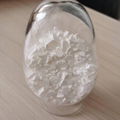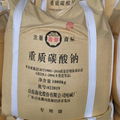| Model: | HH |
|---|---|
| Brand: | HH |
| Origin: | Made In China |
| Category: | Chemicals / Inorganic Chemical Materials / Alkali |
| Label: | soda , sodium carbbonate , detergent |
| Price: |
€150
/ pc
|
| Min. Order: | 150 pc |
| Last Online:25 Jun, 2025 |
Sodium carbonate, also known as soda ash, is widely used in the production of detergents.
Physical and Chemical Properties
Sodium carbonate has the chemical for It is a white, odorless powder. In an aqueous solution, it dissociates into so The carbonate ions can hydrolyze in water, resulting in an alkaline solution. This alkalinity is crucial for its function in detergents.
Role in Detergent Production
1. pH Regulation
Detergents often need to maintain a specific pH range for optimal cleaning performance. Sodium carbonate helps to adjust and maintain an alkaline pH. Grease and oil, which are common dirt components, are more effectively emulsified and removed in an alkaline environment. The alkaline nature of sodium carbonate can saponify fats, converting them into water - soluble soaps. For example, when dealing with cooking oil stains on kitchenware, the alkaline carbonate reacts with the fatty acids in the oil to form soap - like substances that can be easily washed away.
2. Water Softening
Hard water contains cale. These ions can react with soap molecules in detergents, forming insoluble precipitates (soap scum), which reduces the cleaning efficiency of the detergent. Sodium carbonate can react with these calcium and magnesium ions. The carboluble calcium carboesium carboipitates. By removing these hard - water ions, sodium carbonate improves the effectiveness of other surfactant components in the detergent, allowing them to work more efficiently in removing dirt and stains.
3. Builder Function
As a builder in detergents, sodium carbonate enhances the overall cleaning power. It can sequester metal ions other than calcium and magnesium, These metal ions can catalyze the oxidation of certain stains and also affect the color and stability of the detergent. Sodium carbonate binds to these metal ions, preventing their negative impacts on the cleaning process. Additionally, it helps to keep the surfactant molecules in solution and promotes their adsorption onto the surface of dirt particles, facilitating their removal from the fabric or other surfaces being cleaned.
Advantages in Detergent Manufacturing
Sodium carbonate is relatively inexpensive and widely available. Its use in detergent production is cost - effective, which is beneficial for large - scale manufacturing. Moreover, it is environmentally friendly compared to some other chemical alternatives. It is biodegradable and does not leave harmful residues in the environment. This makes it a preferred choice in the production of detergents that aim to meet both cleaning performance requirements and environmental sustainability standards.











